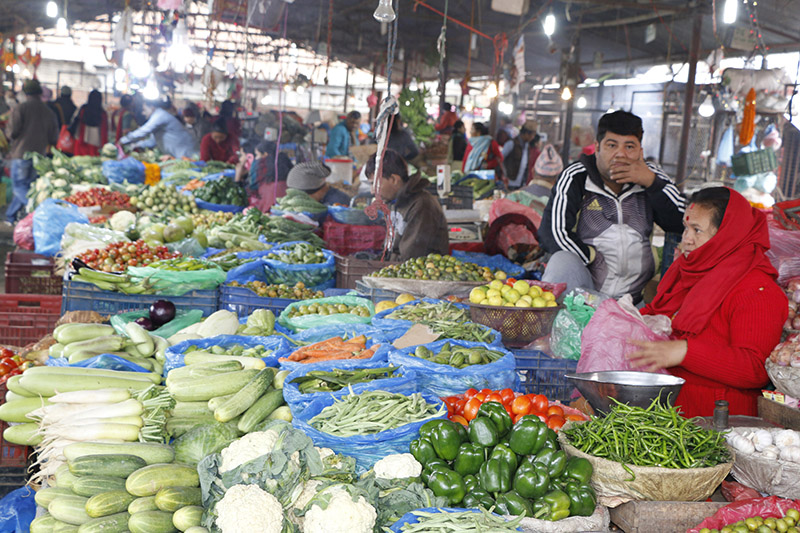Veggie prices drop on supply of local products
Kathmandu, May 2
As the supply of local products has increased, the price of vegetables in the market has started declining.
Earlier, farmers were not being able to supply their products in the market due to the lockdown. However, the Kalimati Fruits and Vegetable Market Development Committee has stated that local products are gradually being supplied in the market due to which the price of seasonal vegetables has gone down.
As compared to the previous week, the price of vegetables declined in the review week and in fact, it is the lowest since the lockdown started, the committee stated.
According to the committee, the wholesale price of local tomatoes on average stands at Rs 25 per kg while Indian tomatoes cost Rs 30 a kg.
Likewise, Indian onions cost Rs 30 a kg, while local carrots cost Rs 30 per kg. Similarly, cauliflower has been priced at Rs 30 per kg, green beans at Rs 60 a kg, bitter gourd (karela) at Rs 60 per kg, gourd (lauka) at Rs 25 a kg, luffa gourd (ghiraula) at Rs 40 per kg and lemon at Rs 200 per kg as per the wholesale rate of Kalimati market today.
As per the committee’s daily import report, only lemons, onions and tomatoes are being imported from India. Other seasonal vegetables like green beans, cauliflower, cabbage, carrot and cucumber, among others are being supplied from the local markets.
However, the quantity of vegetables being supplied has declined as consumption in the market has gone down, informed Vinay Shrestha, information officer of the committee.
According to Shrestha, around 800 tonnes of vegetables used to be supplied daily in the Kalimati market before the lockdown.
However, the quantity has now declined to around 300 tonnes as most of the retail markets are closed and even consumption has declined.
As a result, farmers are not getting a market for their produce.
It is to be noted that both the central and local governments had tried to arrange vegetable markets within the valley and ease the supply of local products from across the country. However, the problems still persist.
A version of this article appears in e-paper on May 3, 2020 of The Himalayan Times.






